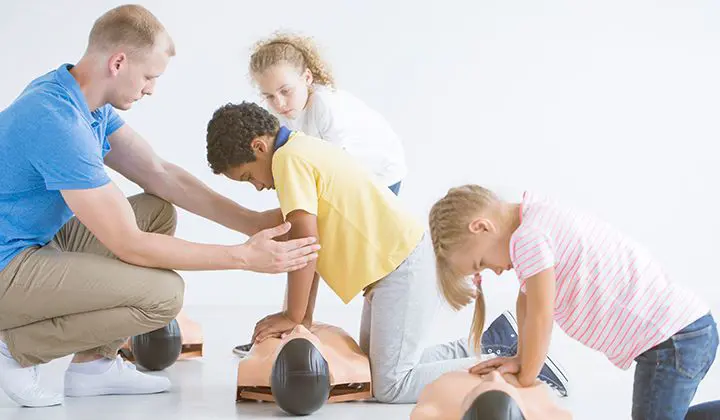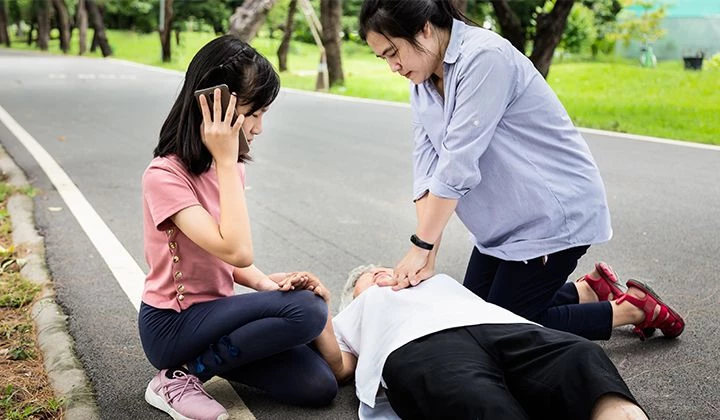CPR
CPR, otherwise known as cardiopulmonary resuscitation, is a life-saving exercise that you can teach yourself and your children in case of an emergency. It is necessary if another person has become unresponsive and is showing no signs of breathing. When teaching your children, remind them that this is very serious and should only happen in an emergency.

When to perform CPR
CPR is a technique used to restore a person’s breathing or heartbeat. It is a last resort when a person becomes unresponsive, it's highly recommended that every parent goes on a first aid course, as it makes this process much easier to understand and remember. CPR can keep a person’s body functioning while they are waiting for an ambulance.
You should teach your children about CPR after you have explained the DRAB acronym to them. For more advanced learning, you can introduce them to DRABC. While DRAB refers to Danger, Response, Airway, Breathing, the final C refers to circulation – the heartbeat.
Cases for CPR are rare and usually apply if an adult stops breathing. You should encourage your child to shout for an adult if somebody does fail the DRABC test. If this is not possible, they may need to perform CPR themselves.

How to perform CPR
You can perform CPR on a child or an adult, though the process differs slightly for infants under one year old. CPR can be hands-only or with rescue breaths, though it is best to only use rescue breaths if you have been first aid trained.
Start by placing the heel of your hand on the person’s breastbone, right in the centre of the chest. Place your other hand on top and lock your fingers. Put your shoulders over your hands and use your body weight to push down firmly, around 2 to 2.5 inches into their chest. Release, allow the chest to return to its original position, and repeat. You should do this between 100 and 120 times per minute.
Some people prefer to do this in rhythm with songs, such as ‘Stayin’ Alive’, which is 103bpm.

Teaching your children
Performing CPR is already stressful enough without overwhelming children with numbers. When teaching children, try to use a manikin if you have one or a large teddy. Don’t worry too much about teaching them how many inches to compress the chest or how many beats in a minute.
Instead, keep it simple and try to teach them the rhythm of a song they might know. Justin Timberlake’s ‘Can’t Stop the Feeling’ is 113bpm, while ‘Just Dance’ by Lady Gaga is 120bpm.
If you feel ready to, you can add rescue breaths. After every 30 compressions, you should lift the person’s head by placing two fingers under the chin. Seal your mouth over theirs, pinch their nose and blow firmly for one second. Repeat twice and return to the compressions.

What to do in an emergency
Ideally, a child should never have to perform CPR on an adult, but you should make them aware of what to do if so. Remind them to only call 999 in an emergency, for example if somebody fails the DRABC test. Tell them to put the phone on speakerphone so that they can use both hands to perform the CPR.
Nowadays, ambulance telephone systems can give basic life-saving instructions, including CPR advice. Rest assured that you or your child will always get the best advice when phoning 999.
If you’re performing CPR on a child under one, you should only use two fingers in the middle of the chest, pushing down about 1.5 inches. Most importantly, remain calm. Your ambulance operator will talk you or your child through what you need to do before the paramedics arrive.
Quiz time for parents
What does ‘C’ stand for in DRABC?
Congratulations
You've now learnt all about how to perform CPR - you're ready to move on to 'Cuts & grazes'!

